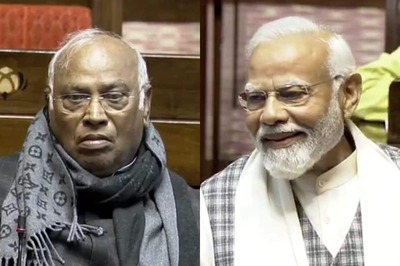
views
Before you picture Makie Yamaguchi as some Indiana Jones-esque treasure hunter, you should know that she’s a TV director-cum-journalist with the Broadcasting System of Niigata. The island of Sado is not a noteworthy place, barring the gold mine that was discovered in the early 1600’s.
“Since Japan was closed to trade with all the European countries except the Netherlands, our gold coins only went to Dutch colonies. Our records showed that the only colony in Asia was somewhere near Madras,” explains Makie in rapid-fire Japanese. Luckily, Noriko Nasukawa of the Nihongo Centre for Languages was present to translate. “As Pulicat was the only port that was under Dutch control then, the large gold slabs were brought there and traded for spices in 1609 AD. I am now visiting the places where our gold has gone and am making a television documentary about it,” she adds. Incidentally, Pulicat was along the famed ‘spice route’.
Though Pulicat is more of a neglected little fishing hamlet now, the fact remains that the Dutch East India Company (VOC) established the country’s first coin minting press inside their fort. “Our gold always bore the mark ‘Sa’ (she points to a Japanese letter on a picture of an old gold slab) and our historical manuscripts show that it was sent to Pulicat for almost 250 years,” she explains. At Pulicat, the gold that was received from the Japanese was melted and minted as Dutch currency and sent to Europe - which is Makie’s next stop after India.
“This is just another link between India and Japan, which could possibly be the earliest recorded in history,” says Xavier Benedict, of the AARDE foundation that is working to popularize Pulicat as a heritage spot. He also pulls out a picture of a grave in the Dutch cemetery there and shows that it belonged to a Japanese lady who married a Dutchman named Higginbottam. “We were quite astounded when we arrived there because it is such a small village,” recalls Makie, “All the people gathered round when they saw my camera and began tugging at my hand,” she adds. Her surprise lies in the fact that such a heritage-rich site has seen such little conservation.
It is a rare honour that the documentary with Pulicat’s golden link to Japan will play on New Year’s Day 2013 on Japanese national TV - it is something of a custom there to watch the programme, according to Makie. Beyond this, there lies a larger plan - As the isle of Sado is applying to be made a world heritage site, they are also trying to get the ‘gold route’ to Pulicat and Netherlands be declared as heritage sites to promote trans-national world heritage, says Benedict.
As Makie winds up filming and interviewing folk in the fishing hamlet, she says that she had a great time in the country, barring one part - “The traffic is insane almost all the way on the 60-km drive from here. I could never drive here,” she says with mock disbelief.




















Comments
0 comment